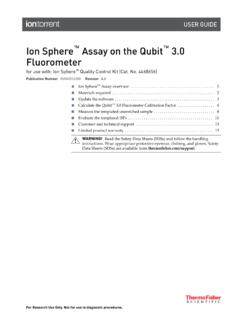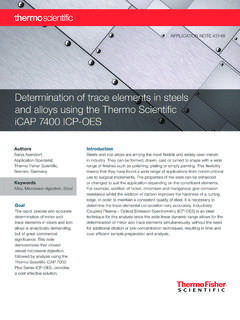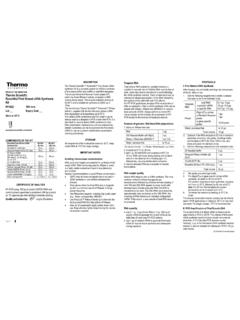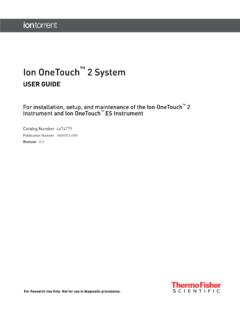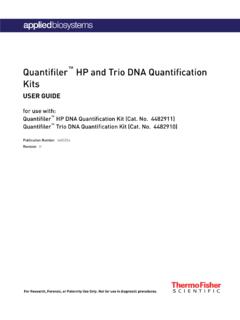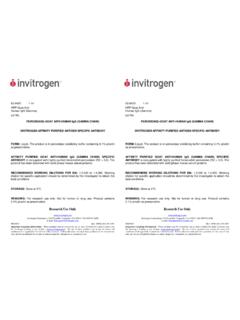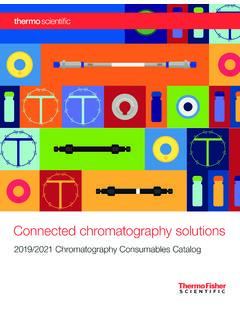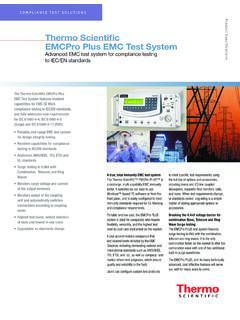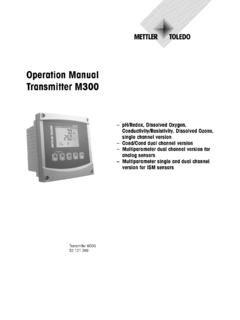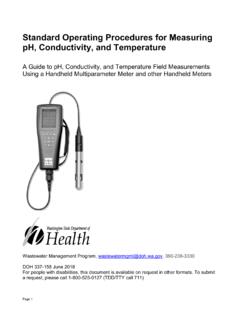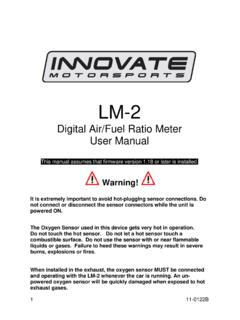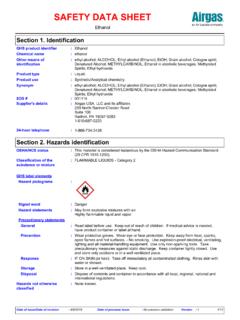Transcription of thermo scei nficti
1 PH measurement handbookthermo scientificpH theory 4pH electrode theory 4pH versus temperature theory 5pH electrode selection guide 6 thermo Scientific pH electrode families 7pH electrode features 8pH electrode recommendations by sample 11pH electrode catalog numbers by sample type 12pH electrode summary table 14pH electrode operation guide 16pH electrode preparation 16 thermo Scientific pH buffers and storage solutions 16pH electrode calibration 17 Calibration recommendations 17 Three-buffer calibration procedure 17pH electrode measurements 19 Measurement recommendations 19 Sample requirements 20pH measurement procedure 20pH electrode maintenance 20 Filling and draining a refillable pH electrode 20 ContentspH electrode storage 22 Short-term electrode storage (up to one week) 22 Long-term electrode storage (more than one week)
2 22pH electrode troubleshooting guide 23 General troubleshooting procedures 23pH electrode interferences 23pH electrode cleaning procedures 24 Role of solution quality in pH measurement 25 Recommended shelf life for buffers and solutions 25 Common pH sample issues and remedies 26pH measurements in TRIS buffer, protein and sulfide samples 26pH measurements in solid samples and surface pH measurements 26pH measurements in pure water samples 26pH measurements in sludges, suspensions, colloids, slurries and viscous samples 27pH measurements in extreme pH or high salt content samples 27pH measurements in nonaqueous samples 284 The term pH is derived from a combination of p for the word power and H for the symbol of the element hydrogen.
3 Together the meaning is the power of hydrogen. pH serves as a convenient way to compare the relative acidity or alkalinity of a solution at a given temperature. A pH of 7 describes a neutral solution because the activities of hydrogen and hydroxide ions are equal. When the pH is below 7, the solution is described as acidic because the activity of hydrogen ion is greater than that of hydroxide ion. A solution is more acidic as the hydrogen ion activity increases and the pH value decreases. Conversely, when the pH is above 7, the solution is described as basic (or alkaline) because the activity of hydroxide ion is greater than that of hydrogen electrode theoryThe activity of the hydrogen ion in solution is measured with a pH measuring system consisting of a glass electrode, a reference electrode, and a pH meter.
4 When a pH sensing glass electrode comes in contact with a sample, a potential develops across the sensing membrane and that membrane potential varies with pH. This sensing electrode is known as a half-cell and a reference electrode provides a second, unvarying potential to quantitatively compare against. Combination pH electrodes are composed of a sensing electrode with the reference electrode built into the same electrode body. Combination electrodes provide the same selectivity and response as a half-cell system, but offer the convenience of working and maintaining only one electrode. A meter serves as the readout device and calculates the difference between the reference electrode and sensing electrode potentials in units of millivolts.
5 The millivolt response is used to calculate the pH reading as displayed on the meter. Known pH standards (buffers) traceable to NIST standards are referenced to calibrate the system prior to any readings. pH theoryElectrode behavior is described by the Nernst equation: E = Eo + ( RT/nF) log aH+E is the measured potential from the sensing electrode, Eo is the fixed potential of the reference electrode, ( RT/nF) is the Nernst factor and log aH+ is the pH. The Nernst factor, RT/nF, includes the Gas Law constant (R), Faraday s constant (F), the temperature in degrees Kelvin (T) and the charge of the ion (n). For pH, where n = 1, the Nernst factor is RT/F.
6 Since R and F are constants, the factor and therefore electrode behavior is dependent on electrode slope is a measure of the electrode response to the ion being detected and is equivalent to the Nernst factor. When the temperature is 25 C, the theoretical Nernst slope is mV/pH unit. thermo Scientific pH meters display the slope as a percentage of the theoretical value. For example, a % slope is equivalent to a slope of mV/pH unit for a two-point calibration. The pH meter detects the pH sensing bulb signal, reference signal and temperature signal and uses these values to calculate the pH using the Nernst equation.
7 thermo Scientific pH meters contain pH versus temperature values for commonly used buffers. This allows the meter to recognize a particular pH buffer and calibrate with the correct buffer value at the measured most common cause of error in pH measurements is temperature. Temperature variations can influence pH for the following reasons: The electrode slope will change with variations in temperature. Buffer and sample pH values will change with temperature. Measurement drift can occur when the internal elements of the pH and reference electrodes are reaching thermal equilibrium after a temperature change.
8 When the pH electrode and temperature probe are placed into a sample that varies significantly in temperature, the measurements can drift because the temperature response of the pH electrode and temperature probe may not be similar and the sample may not have a uniform temperature, so the pH electrode and temperature probe are responding to different slope changes can be compensated for by using an automatic temperature compensation (ATC) probe or a thermo Scientific Orion Triode electrode, which has an ATC probe incorporated into the body of the electrode. The pH meters calculate the electrode slope based on the measured temperature of the pH buffers.
9 The meter will automatically adjust the pH buffer value to the actual pH of the buffer at the measured pH values of buffers and samples will change with variations in temperature because of their temperature pH versus temperature theorydependent chemical equilibria. The pH electrode should be calibrated with buffers that have known pH values at different temperatures. Each sample is unique with thier own undefined pH vs. temperature effect. Therefore, a pH meter cannot correct a sample pH to a reference temperature. Whenever possible, calibrate your system near the sample temperature and always record sample temperature with each value changes by temperature variationNominal pH Value at 25 C0 C5 C10 C20 C30 C40 C50 C60 C70 C80 C90 0 0 87.
10 0 67. 0 0 07. 0 37. 0 89 .. 9 5 011. 3 Potential (mV)714pH100 C (74 mV/pH Unit)50 C (64 mV/pH Unit)0 C (54 mV/pH Unit)Isopotential Point5000-50006 The types of available electrodes, desired electrode features and the compatibility of the electrode with the sample are all determining factors in selecting the right pH electrode. The following section provides the information needed to select the best pH electrode for your applications. The pH electrodes are available with a glass or epoxy body and a variety of electrode body styles, fill types, references, junctions and connectors that suit your application.
